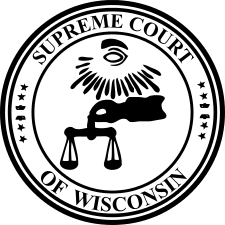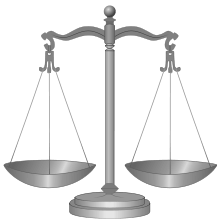Vosburg v. Putney
| Vosburg v. Putney | |
|---|---|
 | |
| Court | Supreme Court of Wisconsin |
| Full case name | VOSBURG, by guardian ad litem, Respondent, vs. PUTNEY, by guardian ad litem, Appellant |
| Decided | November 17, 1891 |
| Citation(s) |
80 Wis. 523; 50 N.W. 403 Wisc. (Wisc. 1891) Second Appeal |
| Case history | |
| Prior action(s) | (Wisc. 1890) First Appeal |
| Case opinions | |
| |
| Court membership | |
| Judge(s) sitting |
Lyon (2nd Appeal) Orton (1st Appeal) |
| Case opinions | |
| Decision by | Lyon |
Vosburg v. Putney, 80 Wis. 523, 50 N.W. 403 (Wisc.1891), is a landmark torts case that helped establish the scope of liability in a battery. The case "came three times before the Supreme Court of Wisconsin, and the court's opinions, the second one in particular, were soon selected for coursebooks on Damages and Torts and became well known to generations of students, teachers and scholars of law. Even a century later, the "case" continues to stimulate thinking about the judicial process, legal doctrine and liability theory."[1] A variety of Vosburg v. Putney briefs can be found in the external links.
Principals
- Defendant - George Putney (tortfeasor), 11yo, male[2]
- Plaintiff - Andrew Vosburg (contact victim), 14yo, male[2]
Summary
- Vosburg v. Putney exemplifies the common law Eggshell skull rule.
- This case also illustrates the well-settled proposition that the tortfeasor must take his victim as he finds him.
- Material omissions in the statement of facts in a hypothetical question will render it inadmissible.[3]
- The fact that the plaintiff is more susceptible to injury does not mitigate a defendant's liability.[4]
Facts
- Defendant and plaintiff were sitting in the classroom of their Waukesha, Wisconsin school -- during school hours.
- Defendant reached across the aisle with his foot.
- Intending no harm,[5] Defendant made contact with plaintiff at the shin of the right leg ("just below the knee").
- Plaintiff did not feel the contact due to the degree of force or shock.
- Moments later, plaintiff felt a violent pain in the place of contact.
- Plaintiff became ill, reporting vomiting and swelling so severe, it twice required surgery.
- During 2nd surgery, doctors discovered the bone had degenerated to an unrecoverable state.
- Defendant was unaware that plaintiff had sustained injury to the same leg, approximately six weeks earlier.
- Expert testimony attributed the damage and loss of limb use to the contact from defendant.
Chronology
- Plaintiff took action against defendant alleging assault and battery.
- A lower court found for plaintiff and awarded $2,800.
- plaintiff appealed. The verdict was set aside and the case was remanded with an order for a new trial.
- On second trial, jury returns a special verdict of seven parts.
- Defendant motions (JNOV) were denied, a judgment for $2,500 was granted to plaintiff.
- Defendant appeals on sixth part of the special verdict - Did defendant intend to do plaintiff harm?
Issues
[6] ==
- Whether the plaintiff lacked a cause of action where the jury found the "defendant, in touching the plaintiff with his foot, did not intend to do him any harm".
- Do material omissions in the statement of facts in a hypothetical question render it inadmissible?
- Is the recovery of damages limited to what an individual might reasonably be supposed to have contemplated?
Holdings
- Sustained (yes)
- Remand, granting new trial.
- Sustained (yes)
Judgment was reversed, and the case was remanded for a new trial because of error in a ruling on an objection to certain testimony.
Rules [2][4]
- "The intention to do harm is the essence of an assault" and "If the intended act is unlawful, the intention to commit it must necessarily be unlawful."
- "there can be no rule of evidence which will tolerate a hypothetical question to an expert, calling for his opinion in a matter vital to the case, which excludes from his consideration facts already proved by a witness upon whose testimony such hypothetical question is based, when a consideration of such facts by the expert is absolutely essential to enable him to form an intelligent opinion concerning such matter."
- Brown v. C., M. & St. P. R. Co. 54 Wis. 342 - "The rule of damages in actions for torts was held [in a prior case] to be that the wrong-doer is liable for all injuries resulting directly from the wrongful act, whether they could or could not be have been foreseen by him [wrong-doer].
Rationale
- Reasoning that, such is the rule in actions for mere assaults. However, this action was for assault and battery. If the kicking of the plaintiff by the defendant was an unlawful act, the intention to commit it must necessarily be unlawful.
- Reasoning that, "The error in permitting the witness to answer the question is material, and necessarily fatal to the judgment."
- Reasoning that, Previously (1st appeal), it was the opinion that the complaint stated a cause of action ex contractu [out of contract] and not ex delicto [out of tort]. Governed by a different rule of damages, the previous case rules on the question of damages.[2]
Sources
- Allison H. Eid, Epsteinian Torts: Richard A. Epstein, Cases and Materials on Torts, 25 SEATTLE U. L. REV. 89 (2001).
- Dobbs, Dan B., Paul T. Hayden, and Ellen M. Bublick. Torts and compensation: Personal accountability and social responsibility for injury. St. Paul, MN: Thomson/West, 2009
- Epstein, Richard Allen. Cases and materials on torts. Austin: Wolters Kluwer Law & Business/Aspen, 2008.
- Farnsworth, Ward, and Mark F. Grady. Torts: Cases and questions. Austin: Wolters Kluwer Law & Business, 2009.
- Friedman, David D. Law's order: What economics has to do with law and why it matters. Princeton, NJ: Princeton UP, 2000.
References
- ↑ McKinney, W.M., Michie, T.J. (1992), "The Encyclopaedia of Pleading and Practice: Under the Codes and Practice Acts, at Common Law, in Equity and in Criminal Cases", Wis. L. Rev. (LexisNexis)
- ↑ 2.0 2.1 2.2 2.3 Epstein, Richard A. (2008). Cases and Materials on TORTS. New York, NY: Wolters Kluwer/Aspen. ISBN 9780735569232.
- ↑ McKinney, W.M., Michie, T.J. (1897), The Encyclopaedia of Pleading and Practice: Under the Codes and Practice Acts, at Common Law, in Equity and in Criminal Cases 8, E. Thompson Co.
- ↑ 4.0 4.1 Farnsworth, Ward, Grady, Mark F. (2009), Torts: Cases and Questions (2nd ed.), Austin, TX: Wolters Kluwer Law & Business/Aspen, ISBN 9780735582941
- ↑ Dobbs, Dan B., Paul T. Hayden; Bublick, Ellen M. (2009), Torts and Compensation: Personal Accountability and Social Responsibility for Injury (6th ed.), St. Paul, MN: West Group, ISBN 9780314184900
- ↑ Lyon, William P. (1891), VOSBURG, by guardian ad litem, Respondent, vs. PUTNEY, by guardian ad litem, Appellant, Harvard University (law.harvard.edu)
External links
- Case Brief for Vosburg v. Putney 80 Wis. 523, 50 N.W. 403 (Wisc. 1891) at Lawnix.com
- Case Brief for Vosburg v. Putney 86 Wis. 278, 56 N.W. 480, 1893 Wisc. at CaseBriefs.com
- Case Brief for Vosburg v. Putney 80 Wis. 523, 50 N.W. 403 (1891) at 4lawschool.com
- Case Brief for Vosburg v. Putney 30 Wis. 523, 50 N.W. 403 (1891) at 1Lcasebriefs.com (mixed quality)
- Case Brief for Vosburg v. Putney 50 N.W. 403 (Wis. 1891) (very terse)
- Case Brief for Vosburg v. Putney 50 N.W. 403 (Wis. 1891) (single paragraph, narrative)
- Outline with Vosburg v. Putney
